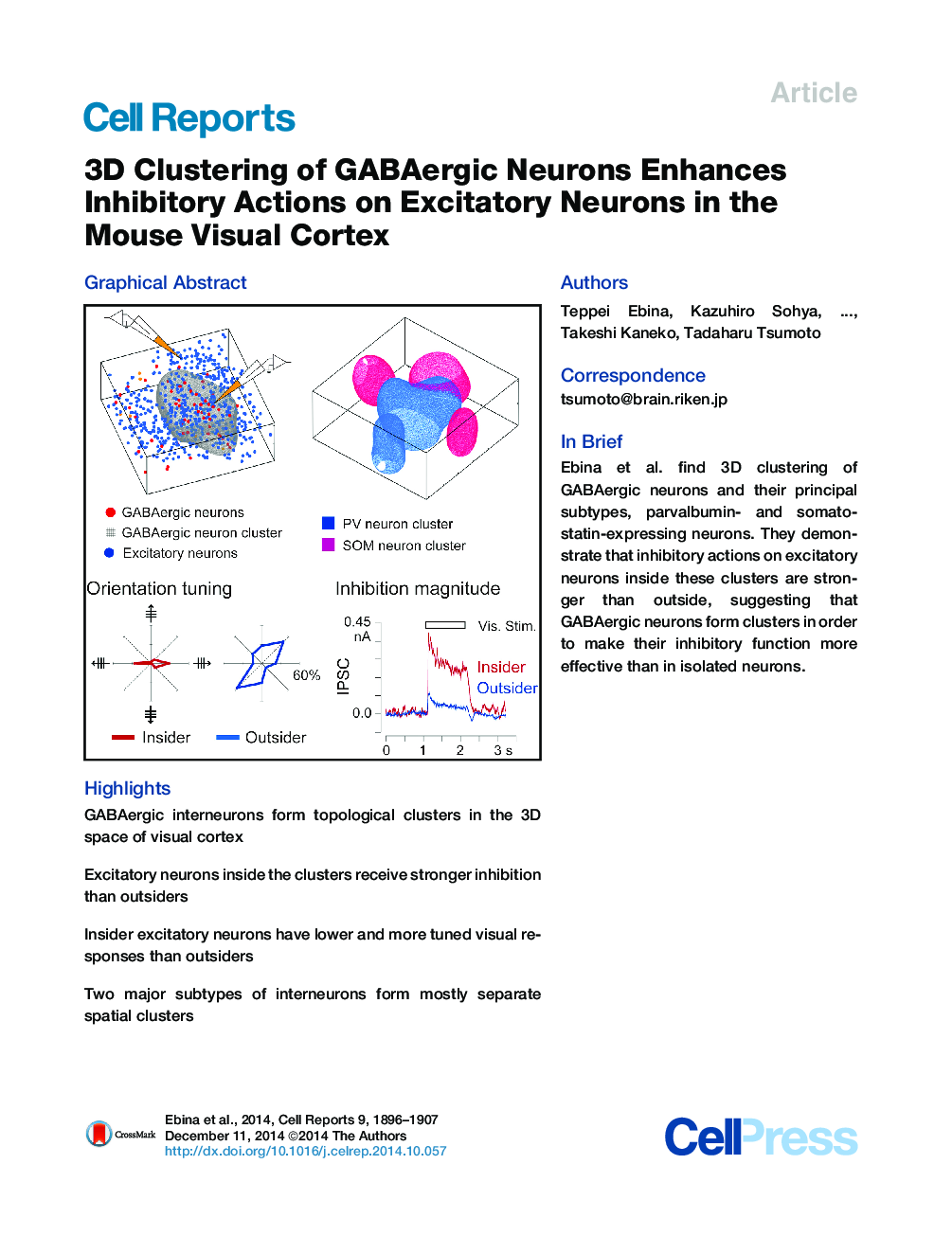| کد مقاله | کد نشریه | سال انتشار | مقاله انگلیسی | نسخه تمام متن |
|---|---|---|---|---|
| 2042156 | 1073187 | 2014 | 12 صفحه PDF | دانلود رایگان |

• GABAergic interneurons form topological clusters in the 3D space of visual cortex
• Excitatory neurons inside the clusters receive stronger inhibition than outsiders
• Insider excitatory neurons have lower and more tuned visual responses than outsiders
• Two major subtypes of interneurons form mostly separate spatial clusters
SummaryNeocortical neurons with similar functional properties assemble into spatially coherent circuits, but it remains unclear how inhibitory interneurons are organized. We applied in vivo two-photon functional Ca2+ imaging and whole-cell recording of synaptic currents to record visual responses of cortical neurons and analyzed their spatial arrangements. GABAergic interneurons were clustered in the 3D space of the mouse visual cortex, and excitatory neurons located within the clusters (insiders) had a lower amplitude and sharper orientation tuning of visual responses than outsiders. Inhibitory synaptic currents recorded from the insiders were larger than those of the outsiders. Single, isolated interneurons did not show such a location-tuning/amplitude relationship. The two principal subtypes of interneurons, parvalbumin- and somatostatin-expressing neurons, also formed clusters with only slightly overlapping each other and exhibited a different location-tuning relationship. These findings suggest that GABAergic interneurons and their subgroups form clusters to make their inhibitory function more effective than isolated interneurons.
Graphical AbstractFigure optionsDownload as PowerPoint slide
Journal: - Volume 9, Issue 5, 11 December 2014, Pages 1896–1907